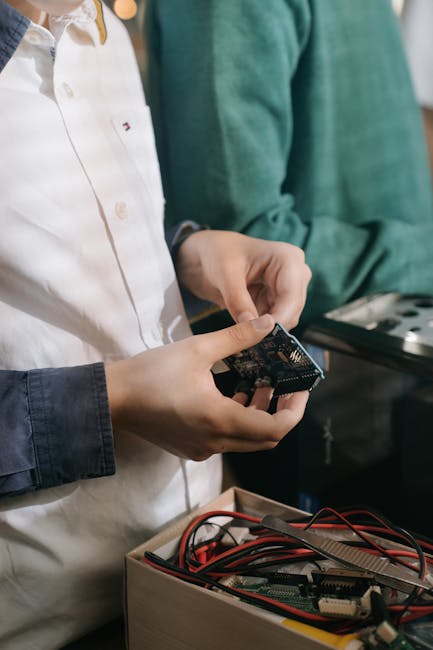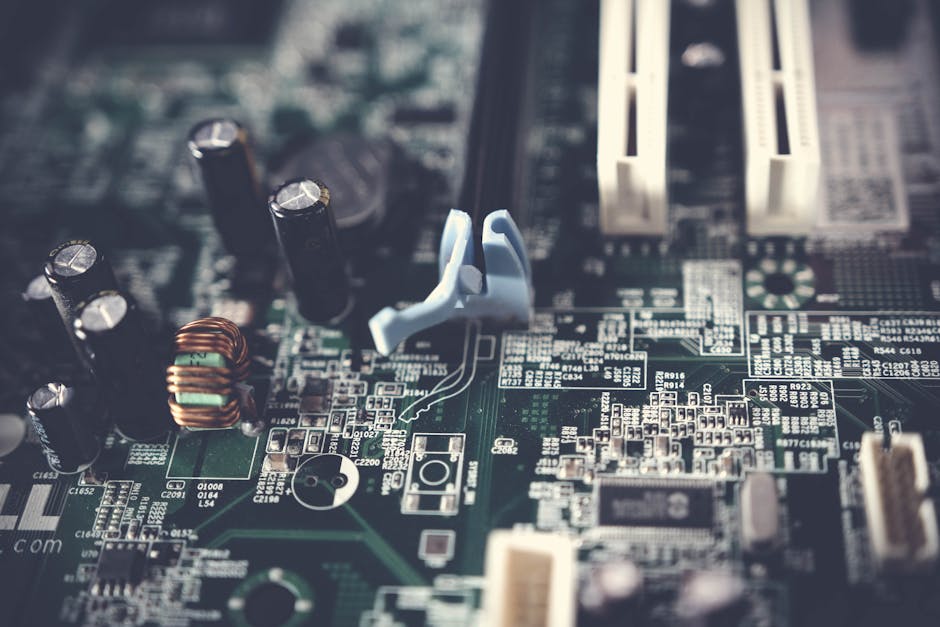Anduril takes over military headset project from Microsoft, Palmer Luckey envisions "technomancer" soldiers - Related to first-ever, decline, over, television:, passmark
Anduril takes over military headset project from Microsoft, Palmer Luckey envisions "technomancer" soldiers

What just happened? Microsoft's troubled mixed-reality headset project for the US Army has come to an end. The Integrated Visual Augmentation System (IVAS) program is being taken over by Anduril, founded by the same man who founded Oculus VR and designed the Oculus Rift, Palmer Luckey, who has ambitious plans for the initiative: he wants to "turn warfighters into technomancers."
The defense-tech startup still needs approval from the Department of Defense before the agreement is confirmed. Based on a post on his personal blog, Luckey appears confident that the deal will be approved.
"For me, this announcement is deeply personal," Luckey wrote. "Since my pre-Oculus days as a teenager who had the opportunity to do a tiny bit of work on the Army's BRAVEMIND project, I've believed there would be a headset on every soldier long before there is a headset on every civilian."
The IVAS units combine high-resolution night, thermal, and soldier-borne sensors into a heads-up display. They use augmented reality to provide wearers with real-time battlefield information, including being able to identify drones.
"Tactical heads-up-displays that turn warfighters into technomancers and pair us with weaponized robotics were one of the products in the original Anduril pitch deck for a reason," Luckey wrote. "The past eight years we have spent building Lattice have put Anduril in a position to make this type of thing actually useful in the way military strategists and technologists have long dreamed of, ever since Robert Heinlein's 1959 novel Starship Troopers."
Anduril is taking over IVAS, and we don't have time for business as usual.
Whatever you are imagining, however crazy you imagine I am, multiply it by ten and then do it again. I am back, and I am only getting started. [website] [website] – Palmer Luckey (@PalmerLuckey) February 11, 2025.
The current IVAS is based on the Microsoft HoloLens headset. The enterprise discontinued Hololens 2 production late last year. With it handing over the Army version to Anduril, Microsoft has confirmed to The Verge that it is leaving the hardware development side and shifting its focus to cloud and AI tech, "which will serve as the foundation for IVAS as a situational awareness platform."
Back in 2018, Microsoft began prototyping the IVAS augmented reality glasses and was awarded a $480 million contract by the Army for 100,000 units. The initial agreement was expanded in March 2021 when Microsoft secured a 10-year contract worth nearly $22 billion to build more than 120,000 headsets.
The project has faced significant challenges from the outset. Initially set for a fiscal year 2021 rollout, the Army's IVAS goggles were delayed until 2022, though military officials insisted they remained committed to the deal. However, concerns soon mounted.
In April 2022, the Department of Defense warned that the large-scale purchase could be a waste of taxpayer money. Later that year, an Army tester raised alarms about the headsets' light emission, which could expose soldiers' positions to enemy forces.
Other issues emerged, including restricted peripheral vision, headaches, eye strain, and nausea – symptoms % of testers within three hours of use. The headsets also failed to perform essential functions, further diminishing confidence in the project. In response, Congress rejected the Army's $400 million request to purchase 6,900 units in 2023, instead allocating just $40 million for Microsoft to develop an improved version.
Mit der Indoor Camera Advance stellt Netatmo eine neue Sicherheitskamera mit moderner Technik und neuer AI-Objekterkennung vor. Ohne Abonnement und oh......
User preference to super resolution technologies such as NVIDIA DLSS, AMD FSR, and Intel XeSS, beat playing games without them, at native resolution, ......
News flash! Smartphone designs are becoming more homogeneous with every passing year. In 2021, the three biggest flagship phones – namely the iPhone 1......
PassMark records first-ever decline in CPU performance after 20 years of growth

PassMark Software has been developing well-regarded PC benchmarking and diagnostic tools since 1998. The enterprise's website hosts a page that compiles performance scores submitted by clients, and right now, the CPU scores are trending downward.
The first graph on PassMark's Year on Year Performance page compiles "thousands" of PerformanceTest benchmark results and is updated every two weeks, . The chart includes data from PerformanceTest versions 5 through 11, with version 8 (released in 2012) being the first to collect single-thread performance data.
Over the first two months of 2025, PassMark reports an unexpected decline in average CPU performance. For the first time since the organization began collecting PerformanceTest results in 2004, newer CPU models show no clear trend of increasing performance. This slowdown appears consistent across both desktop and laptop processors and applies exclusively to the Windows platform.
In 2024, PassMark's data showed that customers tested 186,053 desktop CPUs and 101,316 laptop CPUs, with average performance increasing by [website] and [website], respectively.
So far in 2025, 47,810 desktop processors and 25,541 laptop processors have been tested, revealing a [website] decline in desktop CPU performance and a [website] drop in laptop CPU performance. PassMark began including Arm processors alongside x86 models in 2021.
What's behind this sudden slowdown in performance growth? PassMark offers no definitive explanation for this "historical" phenomenon – at least not yet. The enterprise speculates that individuals may be opting for cheaper or less power-hungry hardware, or that system bloatware is hindering performance. Windows 11 adoption could also be a factor, although the performance difference between Windows 10 and 11 is generally considered marginal.
The simplest explanation, however, is also the most troubling: modern AMD and Intel CPUs may have hit a performance plateau. AMD's Ryzen Threadripper Pro 7995WX, released in 2023, drove a massive [website] increase in desktop CPU performance. But in 2024, newer processors delivered only incremental gains at best.
A recent leak from the reliable analyst Evan Blass has revealed a bunch of new ThinkPad, ThinkBook, and Yoga devices set to see the light of day at MW......
Just 30% of EU member states have nationally implemented The Network and Information Security Directive (NIS2). While this is not unusual given that a......
Eine in zehn Ländern weltweit durchgeführte Studie zeigt, dass die Mehrheit der Nutzer sozialer Medien sich gegen Falschmeldungen und Gewaltandrohunge......
YouTube is the new television: More people now watch on TV than mobile

The big picture: As YouTube celebrates its 20th anniversary, CEO Neal Mohan has made a bold declaration: YouTube is not just a video platform, it's the new television. In his annual letter to the YouTube community, Mohan emphasized the platform's growing dominance in the living room, with TV screens now surpassing mobile devices as the primary way US audiences consume YouTube content.
"TV screens have officially overtaken mobile as the 'primary device for YouTube viewing in the US,'" Mohan presented, which is a major shift in viewing habits. This transition indicates that "YouTube is the new television," but one that looks drastically different from its predecessor. The "new" television is interactive, incorporating shorts, podcasts, and live streams alongside traditional content like sports, sitcoms, and talk exhibits.
Furthermore, YouTube has been optimizing its TV app experience, introducing attributes designed to enhance the big-screen viewing. "We're bringing the best of YouTube to TVs, including a second-screen experience that lets you use your phone to interact with the video you're watching on TV – for example, to leave a comment or make a purchase," Mohan noted.
YouTube is also experimenting with "Watch With," a feature that allows creators to provide live commentary and reactions to games and events. Initial trials were conducted with the NFL.
The platform's growth on connected TVs has also attracted new advertisers, introducing ad formats optimized for the big screen, such as QR codes and pause ads.
Mohan also spoke about YouTube's role as a cultural epicenter, emphasizing the platform's significance during major events. He noted that, on Election Day last year, over 45 million Americans turned to YouTube for election-related content. Landmark videos, like Joe Rogan's interview with President Trump and political sketches from Saturday Night Live, further solidify YouTube's position as a source of information and entertainment.
"From elections to the Olympics to Coachella to the Super Bowl and the Cricket World Cup, the world's biggest moments play out on YouTube," Mohan expressed.
In addition to video content, YouTube has also emerged as a leading platform for podcasts. , YouTube is now the most-used service for listening to podcasts in the US, surpassing Spotify and Apple Podcasts. "We've long invested in the podcast experience and creators have found that video makes this format even more compelling," Mohan explained, adding that YouTube plans to roll out more tools to support podcasters and improve monetization opportunities for creators.
Looking ahead, Mohan underscored three "big bets for 2025," one of which is to bring more AI tools to creators. While generative AI models have garnered significant attention, Mohan noted creators are finding simpler, more practical AI tools to be more beneficial for their everyday workflows.
"As impressive as the generative models are, creators tell us they're most excited about the ways AI can help with their bread-and-butter production," Mohan expressed.
YouTube is investing in AI-powered tools to assist creators with tasks like generating video ideas, titles, and thumbnails. The platform is also using AI to help creators reach new audiences through auto-dubbing, which translates videos into multiple languages. , more than 40 percent of the total watch time for videos with dubbed audio comes from viewers choosing to listen in a dubbed language.
Mohan also pointed to the rise of creators as "the startups of Hollywood," citing examples of YouTubers who have built professional-grade media operations. For instance, Dude Perfect in the recent past opened a $5 million headquarters in Texas, and Alan Chikin Chow, creator of "Alan's World," opened a 10,000-square-foot studio in Burbank, California.
Aaaaaand… action! Time to become a Hollywood mogul! The Executive is now officially released with a 10% launch discount! Produce your dream movies. Ta......
Die Reparatur- und Ersatzteilprofis von iFixit kommen in ihrem aktuellen Teardown des Samsung Galaxy S25 Ultra (Test) zu dem Fazit, dass es sich um da......
GIGABYTE AORUS WATERFORCE X II 360 Cooler.
Market Impact Analysis
Market Growth Trend
| 2018 | 2019 | 2020 | 2021 | 2022 | 2023 | 2024 |
|---|---|---|---|---|---|---|
| 4.9% | 5.9% | 6.2% | 6.9% | 7.3% | 7.5% | 7.6% |
Quarterly Growth Rate
| Q1 2024 | Q2 2024 | Q3 2024 | Q4 2024 |
|---|---|---|---|
| 6.9% | 7.2% | 7.4% | 7.6% |
Market Segments and Growth Drivers
| Segment | Market Share | Growth Rate |
|---|---|---|
| Semiconductors | 35% | 9.3% |
| Consumer Electronics | 29% | 6.2% |
| Enterprise Hardware | 22% | 5.8% |
| Networking Equipment | 9% | 7.9% |
| Other Hardware | 5% | 5.3% |
Technology Maturity Curve
Different technologies within the ecosystem are at varying stages of maturity:
Competitive Landscape Analysis
| Company | Market Share |
|---|---|
| Apple | 18.7% |
| Samsung | 16.4% |
| Intel | 12.9% |
| NVIDIA | 9.8% |
| AMD | 7.3% |
Future Outlook and Predictions
The Anduril Takes Over landscape is evolving rapidly, driven by technological advancements, changing threat vectors, and shifting business requirements. Based on current trends and expert analyses, we can anticipate several significant developments across different time horizons:
Year-by-Year Technology Evolution
Based on current trajectory and expert analyses, we can project the following development timeline:
Technology Maturity Curve
Different technologies within the ecosystem are at varying stages of maturity, influencing adoption timelines and investment priorities:
Innovation Trigger
- Generative AI for specialized domains
- Blockchain for supply chain verification
Peak of Inflated Expectations
- Digital twins for business processes
- Quantum-resistant cryptography
Trough of Disillusionment
- Consumer AR/VR applications
- General-purpose blockchain
Slope of Enlightenment
- AI-driven analytics
- Edge computing
Plateau of Productivity
- Cloud infrastructure
- Mobile applications
Technology Evolution Timeline
- Technology adoption accelerating across industries
- digital transformation initiatives becoming mainstream
- Significant transformation of business processes through advanced technologies
- new digital business models emerging
- Fundamental shifts in how technology integrates with business and society
- emergence of new technology paradigms
Expert Perspectives
Leading experts in the hardware tech sector provide diverse perspectives on how the landscape will evolve over the coming years:
"Technology transformation will continue to accelerate, creating both challenges and opportunities."
— Industry Expert
"Organizations must balance innovation with practical implementation to achieve meaningful results."
— Technology Analyst
"The most successful adopters will focus on business outcomes rather than technology for its own sake."
— Research Director
Areas of Expert Consensus
- Acceleration of Innovation: The pace of technological evolution will continue to increase
- Practical Integration: Focus will shift from proof-of-concept to operational deployment
- Human-Technology Partnership: Most effective implementations will optimize human-machine collaboration
- Regulatory Influence: Regulatory frameworks will increasingly shape technology development
Short-Term Outlook (1-2 Years)
In the immediate future, organizations will focus on implementing and optimizing currently available technologies to address pressing hardware tech challenges:
- Technology adoption accelerating across industries
- digital transformation initiatives becoming mainstream
These developments will be characterized by incremental improvements to existing frameworks rather than revolutionary changes, with emphasis on practical deployment and measurable outcomes.
Mid-Term Outlook (3-5 Years)
As technologies mature and organizations adapt, more substantial transformations will emerge in how security is approached and implemented:
- Significant transformation of business processes through advanced technologies
- new digital business models emerging
This period will see significant changes in security architecture and operational models, with increasing automation and integration between previously siloed security functions. Organizations will shift from reactive to proactive security postures.
Long-Term Outlook (5+ Years)
Looking further ahead, more fundamental shifts will reshape how cybersecurity is conceptualized and implemented across digital ecosystems:
- Fundamental shifts in how technology integrates with business and society
- emergence of new technology paradigms
These long-term developments will likely require significant technical breakthroughs, new regulatory frameworks, and evolution in how organizations approach security as a fundamental business function rather than a technical discipline.
Key Risk Factors and Uncertainties
Several critical factors could significantly impact the trajectory of hardware tech evolution:
Organizations should monitor these factors closely and develop contingency strategies to mitigate potential negative impacts on technology implementation timelines.
Alternative Future Scenarios
The evolution of technology can follow different paths depending on various factors including regulatory developments, investment trends, technological breakthroughs, and market adoption. We analyze three potential scenarios:
Optimistic Scenario
Rapid adoption of advanced technologies with significant business impact
Key Drivers: Supportive regulatory environment, significant research breakthroughs, strong market incentives, and rapid user adoption.
Probability: 25-30%
Base Case Scenario
Measured implementation with incremental improvements
Key Drivers: Balanced regulatory approach, steady technological progress, and selective implementation based on clear ROI.
Probability: 50-60%
Conservative Scenario
Technical and organizational barriers limiting effective adoption
Key Drivers: Restrictive regulations, technical limitations, implementation challenges, and risk-averse organizational cultures.
Probability: 15-20%
Scenario Comparison Matrix
| Factor | Optimistic | Base Case | Conservative |
|---|---|---|---|
| Implementation Timeline | Accelerated | Steady | Delayed |
| Market Adoption | Widespread | Selective | Limited |
| Technology Evolution | Rapid | Progressive | Incremental |
| Regulatory Environment | Supportive | Balanced | Restrictive |
| Business Impact | Transformative | Significant | Modest |
Transformational Impact
Technology becoming increasingly embedded in all aspects of business operations. This evolution will necessitate significant changes in organizational structures, talent development, and strategic planning processes.
The convergence of multiple technological trends—including artificial intelligence, quantum computing, and ubiquitous connectivity—will create both unprecedented security challenges and innovative defensive capabilities.
Implementation Challenges
Technical complexity and organizational readiness remain key challenges. Organizations will need to develop comprehensive change management strategies to successfully navigate these transitions.
Regulatory uncertainty, particularly around emerging technologies like AI in security applications, will require flexible security architectures that can adapt to evolving compliance requirements.
Key Innovations to Watch
Artificial intelligence, distributed systems, and automation technologies leading innovation. Organizations should monitor these developments closely to maintain competitive advantages and effective security postures.
Strategic investments in research partnerships, technology pilots, and talent development will position forward-thinking organizations to leverage these innovations early in their development cycle.
Technical Glossary
Key technical terms and definitions to help understand the technologies discussed in this article.
Understanding the following technical concepts is essential for grasping the full implications of the security threats and defensive measures discussed in this article. These definitions provide context for both technical and non-technical readers.


